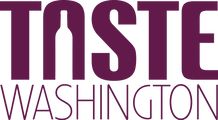Why Washington State’s Wine Scene Has Become So Experimental
Conditions there are ripe for trying out new techniques.

The wine scene in Washington state has exploded in recent years. The number of active wineries operating in the state has increased from just 19 in 1981 to more than 900 today. Among these is a new generation of experimental winemakers who take unconventional approaches at every stage in the process, from the growing techniques to bottling practices and the winemaking itself.
“People are doing things that have never been done before. There’s definitely a pioneering spirit out here,” says Kelly Johnson, the owner and head winemaker at Tetrahedron Wines in Lyle, Washington. At Tetrahedon, traditional winemaking practices blend with modern, science-based techniques. Johnson is one of dozens of Washington State winemakers who are searching for ways to innovate, with delicious results. Plenty of these blends will be available to try during Taste Washington: an annual event in Seattle that features some of the state’s most notable talent in both food and wine.
“This is our first year at Taste Washington,” says Johnson. “This will be the largest and most diverse group of industry tasters and consumers to try our wines thus far. I am excited to see their response.”
“We are not your typical wine industry people,” says Rachael Horn of AniChe Cellars in Underwood, Washington. Instead of tweaking grapes in a lab to achieve high marks on a 100–point scale, AniChe’s wines are focused on showcasing what wines should show as agricultural products: a sense of when and where their grapes were grown. That means letting grapes be grapes, not imposing a certain flavor profile on them or modifying them based on wine scoring criteria.
“In our hippie–dippie way, we ask the fruit what it wants to be, then we don’t manipulate it with chemistry to force it to meet a certain style—we guide it into wine without an agenda,” Horn says. The result is a series of blends that “taste” like the area they came from. With cheeky names like “Goat Boy” and “Three Witches,” Horn acknowledges that her customers aren’t traditional. “Our target market is not someone looking for your standard wine; they want something more adventurous,” she says.
Many Washington winemakers are taking an active role in the growing process, turning to unconventional techniques that are similarly focused on creating wines with a distinct sense of place. Syncline Winery, also in Lyle, farms all of its estate fruit in accordance with biodynamic principles, a holistic approach that positions the vineyard as a solid, self-sustaining entity.
“Biodynamic for me isn’t about making the best kind of wine—it’s about making wine that’s truly expressive of where it’s grown,” says winemaker James Mantone. From his point of view, biodynamics are a means to an end: a way to bring vitality and energy back to the farm, and to make it a cleaner, safer, and more sustainable environment to work in. “Hopefully, that comes through in the energy of the wines,” he says.

Mantone also cites Syncline’s unique climate and topography as an inspiration for taking risks. The winery is located in the middle of the Cascade Mountains, but the craggy landscape is bisected by the Columbia River, creating an unusually dynamic environment that can support less-common varietals. Mantone looks to similarly mountainous regions in Austria, Hungary, eastern France, and northern Italy for inspiration on what to plant, landing on grapes such as Mondeuse noire (which Syncline was the first in Washington to plant commercially), Furmint, and Lemberger. But he is perhaps most excited about growers and winemakers pushing vineyard developments into newer, more challenging-to-grow-in areas such as hillsides and rocky regions. “People are willing to take risks to develop harder areas, which leads to more unique expressions of the grapes we already grow, and new varieties too,” he says.
Johnson is a prime example. Armed with a biology degree from Washington State University and 13 years of experience working in the labs for Trinchero (one of the biggest winemaking estates in Napa), she now spends her time experimenting with varieties and techniques at her own winery. Currently, she’s testing planting Charbono, a northern Italian varietal that’s rarely seen in Washington. “We’ll see what happens,” she says with a laugh.
In the meantime, she puts her science background to good use in the winemaking process. Johnson employs a sur lie aging process for her white wines. This method, which keeps wine in contact with spent yeast cells without filtering them, yields a more robust mouthfeel.

“It’s a technique that requires more monitoring, because you have to keep smelling and tasting the wines to make sure they’re going in the right direction,” she says. “Since my background is in the lab, I can run my own analysis and course-correct if things start looking off.” The result of not having to follow industrial-grade rules and regulations, she says, are wines that are “more complex, more interesting, and more fun.”
Johnson also runs lab analyses for her neighboring winemakers, embodying the kind of collaborative and creative spirit that several Washington winemakers say is part of what makes the industry here unique.
“There’s a lot of young people bringing new energy,” says Mantone. “I’ve been making wine here for 25 years, and when I came in as a kid, I had all sorts of crazy ideas.” Now, he says, there are even more crazy kids with crazy ideas. “And I think that’s great,” he adds.
Experience the new breed of Washington wines at one of six different events during Taste Washington, March 28-31. See a calendar of events and get your tickets here.
This post is promoted in partnership with Taste Washington, where there’s something to satisfy every taste bud.




Follow us on Twitter to get the latest on the world's hidden wonders.
Like us on Facebook to get the latest on the world's hidden wonders.
Follow us on Twitter Like us on Facebook